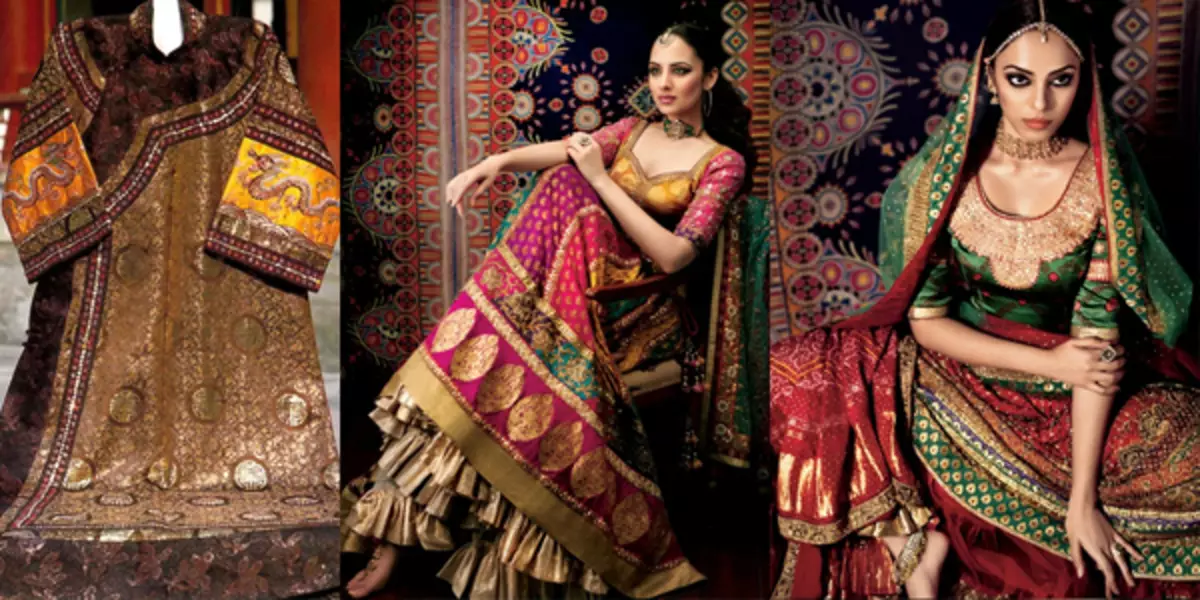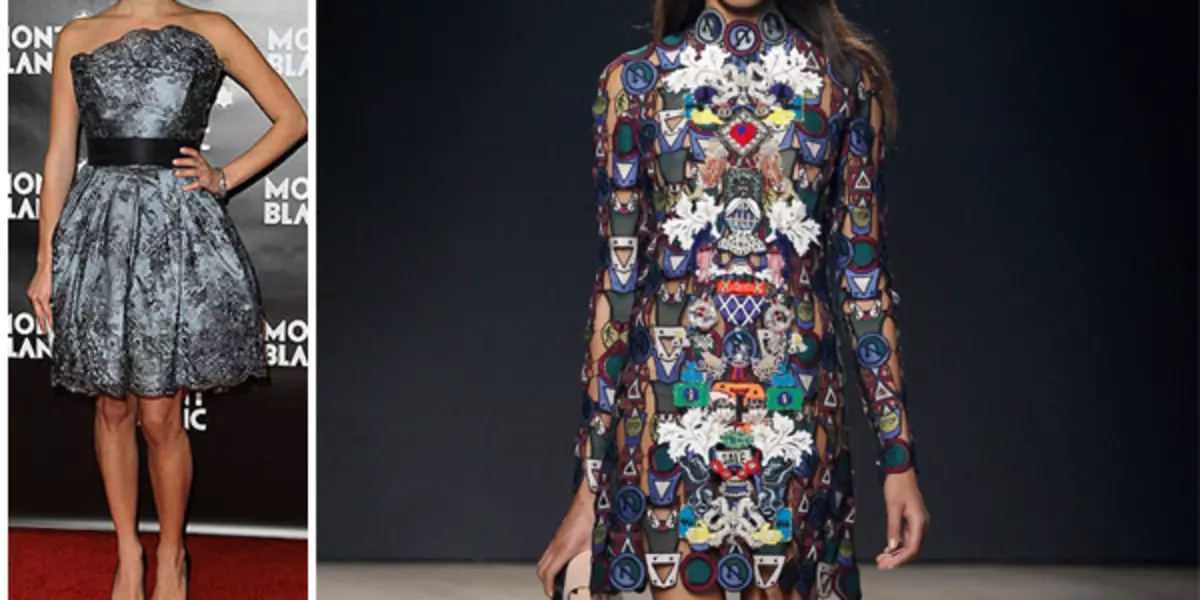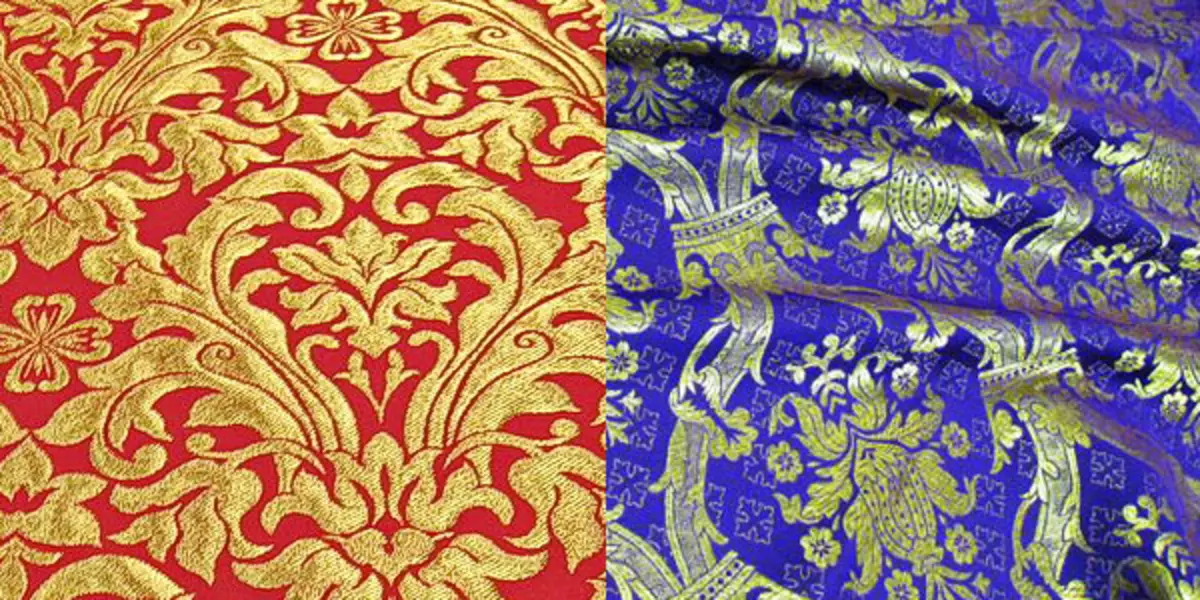An exquisite heavy brocade, transfusing with gold and silver patterns, has long been emperors' clothing. It was sewed with robes for solemn religious ceremonies and court ballots, the legendary movie stars were praised in brocade dresses. For his millennial history, this fabric changed and became more affordable, but still she remains queen of elegant and exclusive clothes.
What is a brocade?

Although the name "Parcha" comes from the Persian word denoting the fabric, its homeland is China. Already in the century (and according to historians, much earlier), silk matters were made with patterns of gold and silver, which was used for the imperial robes. As a rule, brilliant ornaments were created using a metal filament of duck and a silk basis, sometimes, for more complex ornaments, an additional silk refinement was used. The material was created very slowly, one outfit took up to 13 years of work, and the secrets of mastery were carefully guarded.
Nevertheless, the master brothers Choi managed to escape from China to India, and set up the production of this fabric called Tancoy. India has become one of the centers for the manufacture of precious material, and from there it has spread to other countries . This unique textile took a special place under the imperial courtyard of Byzantium, where not only precious metals were used for its manufacture, but also gems and embroidery. The technology of manufacturing imperial robes was very strictly guarded, which did not prevent her from penetrating into the medieval Europe, where its machine production was established.

Instead of metallic threads, the masters began to use cotton fibers, wrapped in the finest metal restaurant. In Russia, the passage began to produce in the XVIII century, and under the name "eye" she got very widespread. Beautiful brilliant fabric was used for male and female solemn clothing, in church ceremonies, decoration of rich interiors and even for festive folk costumes.
Article on the topic: Tuchkirt - a new generation cotton: composition and properties of fabric
With the invention of artificial fibers, the pair has become cheaper.
In the middle of the last century, this cloth has experienced a real boom, because it was ideal for the two most popular silhouettes of that time - both fascinating and with voluminous skirts.
The invention of Lurex made this material even more affordable and practical, and he fits perfectly into the sixties. Subsequently, synthetic fibers began to add to the material, and with the advent of Elastan, the Parchal lost its rigidity and density.
Modern types of brocades
Currently, this fabric is manufactured both in traditional and in modern technologies. The most valuable is a woven manual Nanjing Parch, attributed to the cultural heritage of China. The ancient methods of manual weaving have been preserved to date also in India, and the Indian Parch of Yamdani comes in value after Nanjing cloth. It is manufactured by individual orders, usually for expensive wedding dresses.

An Indian kinhab of natural silk with metal threads is enjoyed great fame, which is characterized by elegant floral ornaments. As for the modern mass production, the brocade materials are customary to classify the composition of the fibers, namely:
- The silk fabric, which is obtained by a jacquard weave or embroider. Such a brocade is quite rigid, keeps the volume and drapery well, has excellent thermostatic properties and is practically not crushed.
- The viscose material also does not have elasticity, keeps the form well and is not inclined to spine. Usually, the viscose brocade is manufactured with the addition of lurex threads.
- Lycra-papers - blended tissue with additive elastic fibers.
In modern types of parying materials, cotton and wool are sometimes added, which increases their hygiene and heat insulating properties. Despite its low cost, these materials continue to remain luxury symbols, they attach a royal view of any woman.
Article on the topic: Application "Fruits on a Plate": Templates for children from younger to the senior group
Properties and application
Sparkling patterned fabric is widely used for elegant and concert clothing, historical and theater costumes, as well as hats, stylish shoes and accessories. China produces silk brocade bathrobes that are in demand as exclusive home clothing. The traditional is also the use of brocade in church source.
When sewing pary units, the properties and features of this textile should be taken into account:
- high density and high weight;
- stiffness and failure;
- Fancy and rather large pattern, shiny surface.
All this, on the one hand, attracts attention, on the other hand, contributes to a visual increase in volume.

Therefore, when sewing products from this material requires an accurate cut and careful selection of the model, and its owner should carefully select supplements so as not to look vulgar.
A long dress from the brocade is perfect for a wedding or a New Year's ballet, a short and laconic cocktail dress or a twin costume will make you the queen of any solemn event. In the festive atmosphere, a braching jacket, handbag, shoes will always be appropriate. Such things are not suiced, so require appropriate care.
Care
By purchasing a product with a brilliant ornament, it is necessary to carefully examine its composition. If the brocade contains metal threads, it should not be washed, but to give to dry cleaning.
Silk, Lurex, viscose, synthetic fibers are well tolerated delicate washing in warm water.
It is not necessary to iron brickwork, although from time to time it is recommended to iron their seams from the inside.
